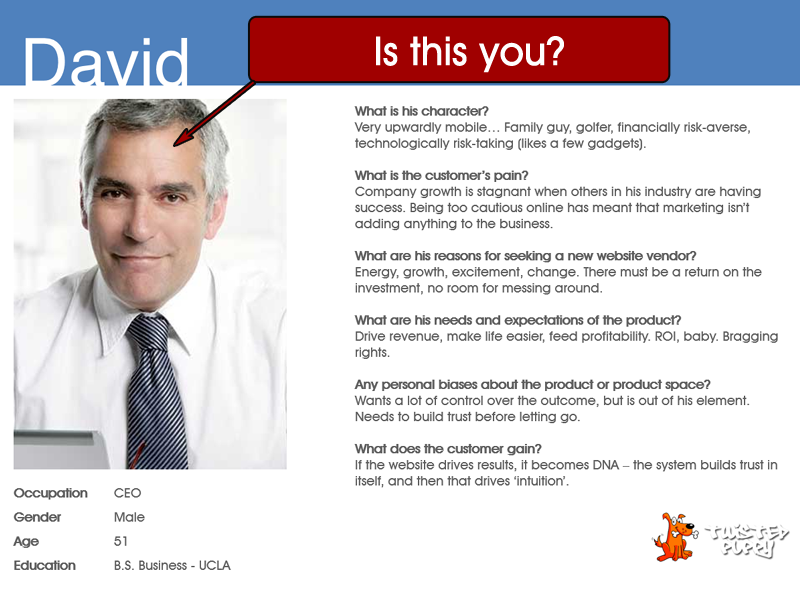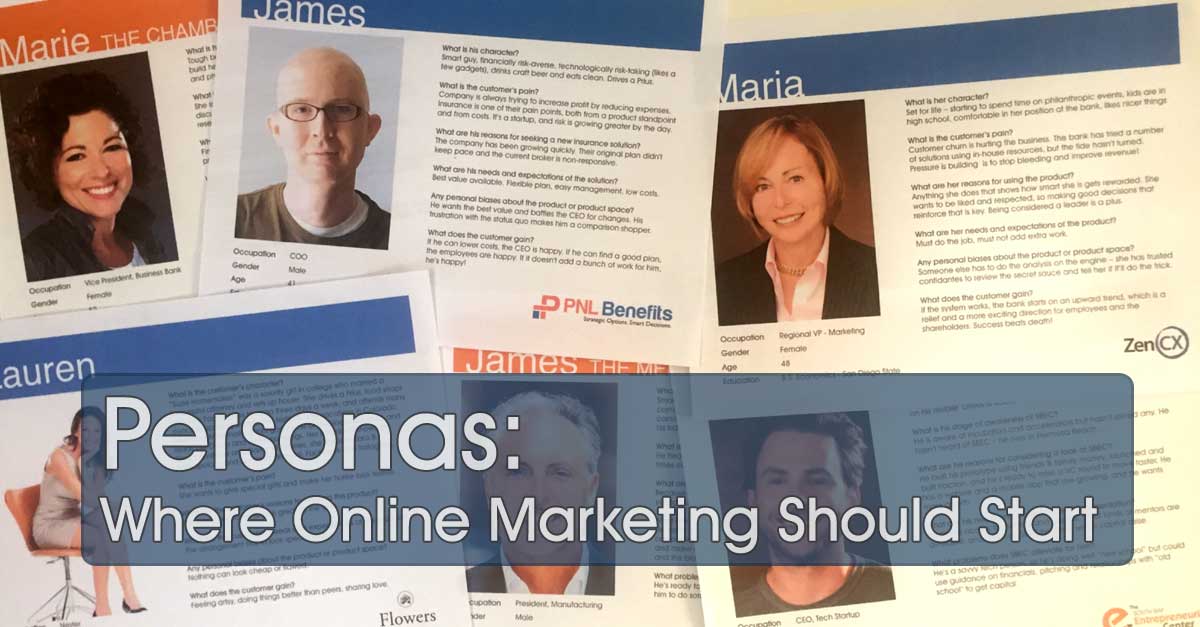We’ve been working on a number of online marketing projects lately, and one of the most important preliminary steps is identifying the target audience. Many years ago, someone taught me the concept of “personas”, which drives every project we do at Twisted Puppy. Using personas, we can be more strategic in catering to each audience, internalize the people that we are trying to attract, and relate to them in a more personal style.
Creating Personas
For each persona, we create a fictional person, including a name, occupation, age, gender, and educational background. Then we pursue a few questions that shape our future conversation with this persona. Although we adapt the questions to suit each client and industry, here are the main ideas we use in creating each persona.
What is the customer’s character?
This one can be fun – we consider things that comprise the person’s day-to-day life. Where does she shop? What kind of car does he drive (we think cars say a lot about the driver…)? What is her mindset at work? Where does he hang out after hours? What TV shows does she watch?
What is the customer’s pain?
Obviously this is a critical one. If you’re selling medical benefits packages and your customers are corporate HR folks, the customers’ pain is managing costs, dealing with staff turnover, managing a significant amount of paperwork, and keeping all the employees happy with their insurance. If you’re selling fresh-baked cookies, your customers want a tasty cookie at a reasonable price (or if you’re selling “Four Seasons” cookies, at a high price!). Another way of asking this is “What problems do our products and services alleviate?”.
What are the customer’s reasons for choosing this product?
Ah, the all-important value proposition. What would be the main benefit this customer derives from choosing you or someone else: quality, value, efficiency, quality of life, social status. Most vendors are best served NOT to compete on price – even CostCo isn’t necessarily competing on price with every item in the store.
Are there any personal biases about the product, market or industry?
If you have specific barriers you have to overcome, it’s critical to know that up front. If you’re selling software to banks, the bankers want to know you’re a safe choice (so customer testimonials and security seals will matter in the conversation). Identifying the obstacles early helps define tasks in the branding roadmap.
What does the customer gain?
Adding on to the value proposition, this question helps us visualize what success looks like. For us, our customers want to find more customers, look better than their competition in the marketplace, and feel comfortable that their technology needs are being handled with high competency. Keep a list of the noteworthy benefits your customer seeks and finds from you (hint: use your existing testimonials or positive feedback).

Personas are a Foundation…
We’re going to share thoughts on copywriting soon – and one of the steps in our copywriting process is personas. It’s an important topic we didn’t want to underserve – so consider that personas are where online marketing should start, and then you’ll see how the rest of the process unfolds.
A Deeper Dive
Crazy Egg’s Guide
Why do some marketing campaigns succeed and others fail?





![Video Engagement [Infographic]](https://twistedpuppy.com/wp-content/uploads/2017/08/twisted-puppy-blog-video-engagement-1-500x383.png)


[…] Your reputation in the marketplace has a profound impact on your business. One of our favorite books, Captivology, explains the importance of using reputations of experts, authorities, and the crowd to build trust and captivate your audience. Simply stated, people want to know that others have made the same choice and benefited from their decision. A key factor, though, is mapping social proof to the intended audience (as you know, Twisted Puppy loves working with personas). […]